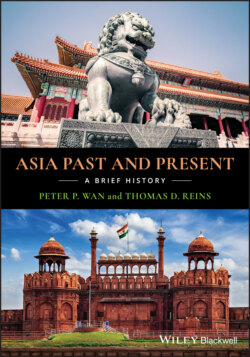Читать книгу Asia Past and Present - Peter P. Wan - Страница 51
Government and Law
ОглавлениеThe Tang Dynasty did not leave good government to the uncertainties of an emperor’s personality and moral choices; rather, it put in place institutional structures and procedures to ensure good government. Emperor Tang Taizong borrowed from the Sui model to develop a highly structured national government bureaucracy. It was centralized, balanced, and efficient. It functioned in compliance with a clear division of duties and strict procedures.
First, he enhanced the power of the emperor by eliminating the powerful position of prime minister and dividing his powers among three specialized secretariats, each with a minister and deputy ministers. Each secretariat had its defined duties: (1) to draft laws and orders in the name of the emperor; (2) to review and approve them after the ministers had discussed them and reached unanimous agreement, and the emperor had signed them; and (3) to oversee their implementation. All major issues were required to be discussed and approved in an open joint session of the three secretariats. An order missing any one of the three‐step procedure was considered legally incomplete.
The secretariat responsible for implementation had one minister and six deputy ministers responsible for the six government departments in charge of such matters as government personnel (the officials), census and revenue (tax collection), law enforcement, war, and land, water, and engineering. There was also a supervision board and a supreme court. This government structure enhanced the emperor’s power by removing the prime minister, but it also checked and balanced his power by creating the other government agencies and procedures.
The 30‐volume Great Book of Tang Law was an expanded version of the laws promulgated by Emperor Tang Taizong. It aimed for simplicity and leniency, in contrast to the earlier harsh and cumbersome Sui laws. A milestone in the history of Chinese legislation, it was also the model for successive Chinese dynasties, and was instrumental in shaping the legal systems of Korea, Japan, and Vietnam.
